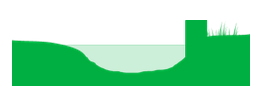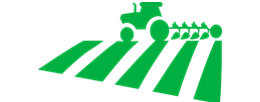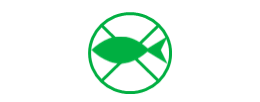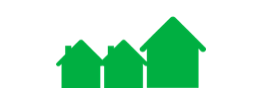West Cumbria Catchment Partnership (Derwent)
- Catchment HostWest Cumbria Rivers Trust Ltd
- River Basin DistrictNorth West
- Management CatchmentDerwent North West
- Management Catchment ID3028
Catchment partnership vision
Our vision for West Cumbria is for healthy rivers, lakes and estuaries that support wildlife, are used sustainably to benefit people, and are valued by all. We will work collaboratively to plan, fund and deliver actions to:
- reverse redundant physical modifications and allow natural function
- improve water quality by reducing agricultural diffuse pollution and wastewater inputs
- increase resilience to climate change
- reduce the impacts of floods, droughts and coastal erosion using sustainable methods
- provide high quality, diverse and connected habitats that support a wide range of wildlife, and control invasive species
- support farm businesses to adopt sustainable practices that provide diverse habitats, clean water and ‘slow the flow’ measures
- increase opportunities for local communities to enjoy, understand and safeguard their catchments
- develop a robust evidence base to underpin action.

Related websites
Find out more about the activities and ambitions of this catchment partnership and how you can get involved to help improve the water environment in the catchment.
Catchment challenges
Current challenges identified by partnership

Physical modifications
Straightened and perched rivers and obstacles to fish passage, particularly Yearl weir

Pollution from abandoned mines
Abandoned metal mines in Newlands Valley and Threlkeld causing zinc and cadmium pollution

Pollution from agriculture and rural areas
High sediment and phosphate in lower Ellen and Derwent tributaries and coastal streams, and low dissolved oxygen in lakes
Wider water environment challenges identified by partnership
Nature Recovery, designated areas for nature and biodiversity
Biosecurity risks from recreational use of pristine lakes, high likelihood of spread of invasive species from other lakes
Build environmental resilience and adaptation to climate change
Flooding, drought and high water temperatures threaten communities and native wildlife, particularly salmonids
Support Nature Recovery Network and Local Nature Recovery Strategy
Multiple strategies exist including the Catchment Partnership plan, LNRS and Lake District National Park Plan and need to be joined up
Reduce storm overflows and drainage system incidents
Ageing combined sewer infrastructure systems with frequent overspills throughout the catchment
Improved bathing waters (including inland)
Well-used lakes, including Derwentwater and Bassenthwaite Lake, are not designated as inland bathing waters
Protect and restore healthy soils and nutrient balance
Better soil management could increase infiltration and organic matter, helping reduced flood risk, improve water quality and sequester carbon
Future challenges predicted by partnership

Changes to the natural flow and water levels
Modified channels throughout the catchment are susceptible to drought and spate events

Invasive Non-native Species
New Zealand pigmyweed is present and has potential to spread to pristine lakes, increasing tourism and recreational use of lakes causing greater biosecurity risks

Pollution from waste water
Growing populations and tourism combined with more low flow events and storm events (combined sewer overflows)
Future challenges predicted by Environment Agency
Future challenges in 2050
- Invasive Non-native Species
- Physical Modifications
- Pollution from Agriculture and Rural Areas
Emerging challenges
- Pollution from Agriculture and Rural Areas
- Pollution from waste water
- Physical Modifications
Partnership success highlights 2016 to 2021
Since 2016 numerous projects have enhanced the catchment and in-stream habitat by improving water quality, restoring biodiversity and reducing flood risk:
- United Utilities' Thirlmere Resilience Project is employing sustainable land management upstream of Thirlmere Reservoir
- The Derwent River Corridors Group completed 51 habitat improvement projects, informed by annual fish population surveys at 150 sites
- The River Restoration Strategy partnership completed 15 innovative projects to restore natural processes
- Cumbria Wildlife Trust restored extensive peat areas on White Oak Moss and Matterdale Common
- Large upland woodlands were created by National Trust and the Woodland Trust
- The National Trust's Riverlands Project began by restoring natural function in Brockle Beck
- West Cumbria River Trust's Cocker and Glenderamackin natural flood management projects reduced runoff and created pond and wetland habitats.Further work targeted water quality issues: Natural England's Catchment Sensitive Farming delivered advice and interventions to reduce agricultural runoff and Facilitated Farmer groups in the Cocker, Crookhurst, Glenderamackin and Borrowdale shared best practice. The 'Ellenwise' project in the Crookhurst catchment reduced agricultural pollution to improve the condition of Allonby bathing waters. United Utilities upgraded multiple wastewater treatment works and the 'Water and Abandoned Metal Mines' Programme began delivery of the Gategill minewater remediation scheme.

Partnership development plans
The West Cumbria Catchment Partnership will continue delivering multi-benefit projects, integrating flood risk reduction with environmental improvements including coastal and marine projects. The partnership would benefit from greater involvement of local communities and specific interest groups in project development. The partnership aims to utilise a broader range of funding sources including private investment in delivering landscape scale habitat improvement and make use of opportunities afforded by Biodiversity Net Gain and Nutrient Neutrality legislation.
Partnership priority actions and measures for 2022 to 2027
Confident
Thirlmere Resilience & St. John's compensatory measures - Sustainable land & river management to improve drinking water quality and geomorphology
- Reason for measure
- Manage modified habitats
- Delivery mechanism
- Confirmed water industry national environment programme 2020-2025
- Location
- St John's Beck Thirlmere
Confident
National Trust Riverlands project – large scale river and peat restoration in Borrowdale
- Reason for measure
- Manage modified habitats
- Delivery mechanism
- Current Rural Development Programme
- Location
- Derwent - Stonethwaite Beck to conf Greta Derwent - headwaters to conf Stonethwaite Beck Stonethwaite Beck
Confident
Continued nature recovery, natural flood management and river restoration in Cocker & Glenderamackin catchments
- Reason for measure
- Manage modified habitats
- Delivery mechanism
- Flood and Coastal Innovation and Resilience Fund
- Location
- Naddle Beck Trout Beck (Derwent NW) Glenderaterra Beck
Confident
Woodlands for Water - helping farmers apply for the England Woodland Creation Offer for riparian woodlands
- Reason for measure
- Control or manage urban diffuse pollution
- Delivery mechanism
- Climate for Nature funds
- Location
- Cocker Derwent Ellen and West Coast
Confident
Cessation of abstraction and removal of redundant water industry infrastructure following West Cumbria supplies project
- Reason for measure
- Mitigate the impacts on ecology from physical modifications in modified waters
- Delivery mechanism
- Potential future water industry programme
- Location
- Crummock Water Over Water Chapelhouse Reservoir
Confident
River Restoration Strategy – restoring natural function to modified watercourses and easing barriers to fish passage
- Reason for measure
- Mitigate the impacts on ecology from physical modifications in modified waters
- Delivery mechanism
- EA Flood/coastal risk management programme
- Location
- Newlands Beck Dash Beck Cocker - conf Whit Beck to conf Derwent St John's Beck Cocker - Crummock Water to conf Whit Beck Broughton Beck Marron Tom Rudd Beck
Less certain
Newlands Valley mine spoil stabilisation
- Reason for measure
- Control or manage rural diffuse pollution
- Delivery mechanism
- Coal Authority Mines Programmes
- Barriers to delivery
- Increased resource for delivery, improved technical understanding of approaches
- Location
- Newlands Beck
Less certain
Implementing findings of smolt tracking project and addressing barriers to fish passage on the Rivers Ellen and Derwent
- Reason for measure
- Manage modified habitats
- Delivery mechanism
- Potential future water industry programme
- Barriers to delivery
- Secure additional funding to resource
- Location
- Derwent - conf Cocker to tidal Ellen (lower) Marron
Less certain
Water friendly farming projects to improve water quality in rivers, transitional waters and bathing waters
- Reason for measure
- Control or manage rural diffuse pollution
- Delivery mechanism
- Environment Land Management Scheme (future full-scale roll-out)
- Barriers to delivery
- Increased resourcing for farm advisers
- Location
- Solway Outer South Black Dub Lostrigg Beck Broughton Beck Marron Tom Rudd Beck
Less certain
Invasive species control and biosecurity campaigns, focussed on Crassula in lakes, signal crayfish and Himalayan balsam
- Reason for measure
- Control or manage invasive non-native species
- Delivery mechanism
- WEIF Water Environment Improvement Fund
- Barriers to delivery
- Inclusion of INNS control in ELMS, technical feasibility of Crassula control
- Location
- Derwent Water Crummock Water Buttermere St John's Beck Broughton Beck
Less certain
Low risk barrier removal programme – for the improvement of fish passage, habitat diversity and hydromorphology
- Reason for measure
- Manage modified habitats
- Delivery mechanism
- WEIF Water Environment Improvement Fund
- Barriers to delivery
- Secure additional funding to resource
- Location
- Newlands Beck Trout Beck (Derwent NW) Thirlmere Stonethwaite Beck Marron
Wider water environment
Continue to work closely with Local Nature Recovery Strategy, Lake District park Partnership and other strategies to ensure coordinated delivery
- Reason for measure
- Support Nature Recovery Network and Local Nature Recovery Strategy
- Delivery mechanism
- WEIF Water Environment Improvement Fund
- Location
- Derwent North West
Wider water environment
Campaign for new bathing water designations for well-used lakes including Derwentwater and Bassenthwaite Lake
- Reason for measure
- Improved bathing waters (including inland)
- Delivery mechanism
- WEIF Water Environment Improvement Fund
- Location
- Derwent Water Bassenthwaite Lake
Wider water environment
Work with developers to increase use of SUDs and nature-based solutions to reduce runoff into combined sewers
- Reason for measure
- Reduce storm overflows and drainage system incidents
- Delivery mechanism
- Developer funded
- Location
- Derwent North West
Catchment Partnership contributors
Partners involved in the creation of this page and the actions of the partnership:
- Cumbria River Authority Governance Group
- Derwent Owners Association
- United Utilities
- Foundation for Common Land
- National Trust
- Lancaster University
- West Cumbria Catchment Partnership
- NFU
- West Cumbria Rivers Trust
- Environment Agency
- Newground
- Natural England
- Forestry Commission
- Countryside Landowners Association
- Farmer Network
- Love My Beach
- Friends of the Lake District
- Cumbria Woodlands
- Woodland Trust
- Lake District National Park
- Highways England
- Cumbria Wildlife Trust
- Keswick Flood Action Group
- Allerdale Borough Council
- Cumbria County Council